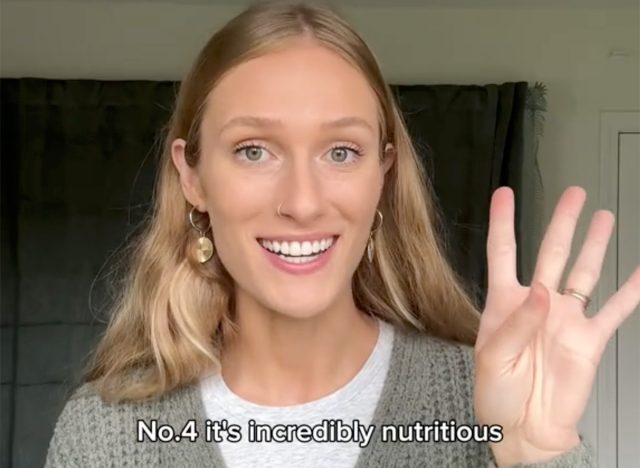I'm a Nutritionist And Here Is Why You Should Be Eating More Sourdough Bread
Is bread really the enemy when it comes to losing weight? While many people opt to cut the gluteny food from their diet completely when trying to drop pounds, others advocate that you can eat it — one expert even encourages it. Kayla Varney (@consciouslykay), a health and wellness influencer with over 250,000 followers on TikTok and 87,000 on Instagram, regularly shares tips on diet and fitness. In a recent viral video she elaborates on the many reasons why she eats a certain type of bread on a regular basis. "As a holistic nutritionist, I absolutely love sourdough bread, and here's why," she says in the clip. Before you break bread, here is everything you need to know all about the potential health benefits – and here what The Diet Diva, Tara Collingwood, MS, RDN, CSSD, LD/N, ACSM-CPT, a Board Certified Sports Dietitian, has to say about it.
It's Great for Gut Health
@consciouslykay Here to support you and your love of bread 🫡 #sourdough #guthealth #bloodsugar #gluteintolerence #sourdoughbread #sourdoughtok ♬ original sound – Kayla Varney
"Number one, it's great for gut health," Kayla says. "Sourdough bread is fermented, so it's much easier to digest than white bread, and it also acts as a prebiotic, meaning that the fiber helps feed the good bacteria in your gut. It's also lower in gluten than other types of bread, so people with gluten intolerance may be able to tolerate it better than normal bread." Collingwood agrees that the fermented nature of sourdough does indeed provide good benefits as a prebiotic for the gut. "Anyone who is gluten sensitive or intolerant or with celiac disease should still avoid sourdough bread that is made with regular wheat flour," she says. "It will still contain gluten and could cause a reaction."
It Has a Lower Glycemic Index

"Number two, it has a lower glycemic index than normal types of bread, so it doesn't cause a blood sugar spike," she maintains. "The fermentation does provide a benefit when it comes to glucose response," agrees Collingwood. "It still contains carbohydrates so diabetics should still be aware that it can still impact their blood sugar."
Related: Simple Techniques for Explosive Fitness Gains, From a Personal Trainer
It Doesn't Have Any Preservatives

"Number three, it doesn't require or contain any preservatives," says Kayla. "Sourdough bread contains acetic acid, which naturally prevents the growth of mold, so it essentially naturally preserves itself." The shelf life of sourdough can be longer than other fresh breads that don't contain preservatives, says Collingwood, "but I still recommend looking for signs of mold if it is more than 3 to 4 days old."
It's Nutritious

"Number four, it's incredibly nutritious," Kayla maintains. "It contains moderate amounts of iron, calcium, B vitamins, folate, zinc, potassium, selenium, iron, magnesium, vitamin E, and more." Collingwood agrees that the fermentation process allows many of the vitamins and minerals to be absorbed better than traditional breads. "The amount of nutrients present depends on the flour used," she says.
Related: I Lost 100 Pounds While Eating This Kind of Spaghetti
It's Delicious

And finally, number five. "It's freaking delicious!" she exclaims.
💪🔥Body Booster: Swap out your bread with sourdough, but try and stick to a fresh-baked loaf versus a processed option.





